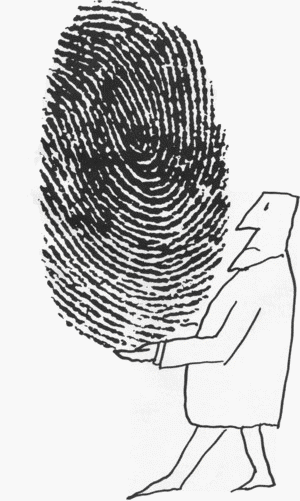|

No two people -- not even identical twins -- have ever been shown to share fingerprints. The friction ridges that cover the skin on your hands and feet are formed by the seventeenth week in the womb; at birth they have become so deep that nothing can alter them, not even surgery. Look at your fingertips: the patterns resemble finely detailed maps of the bypasses and exit ramps on modern roads. Experts use the nomenclature of the highway to describe them: there are spurs, bifurcations, and crossovers. Some people have fingertips that are dominated by "loops," others by "tented arches" or small circles that examiners call "lakes," or smaller ones still, called "dots." Collectively, these details are referred to as minutiae -- an average human fingerprint may contain as many as a hundred and fifty minutia points. To identify fingerprints, an expert must compare these points individually, until enough of them correspond that he or she feels confident of a match.
-- Michael Specter, "Do Fingerprints Lie?" in The New Yorker
|